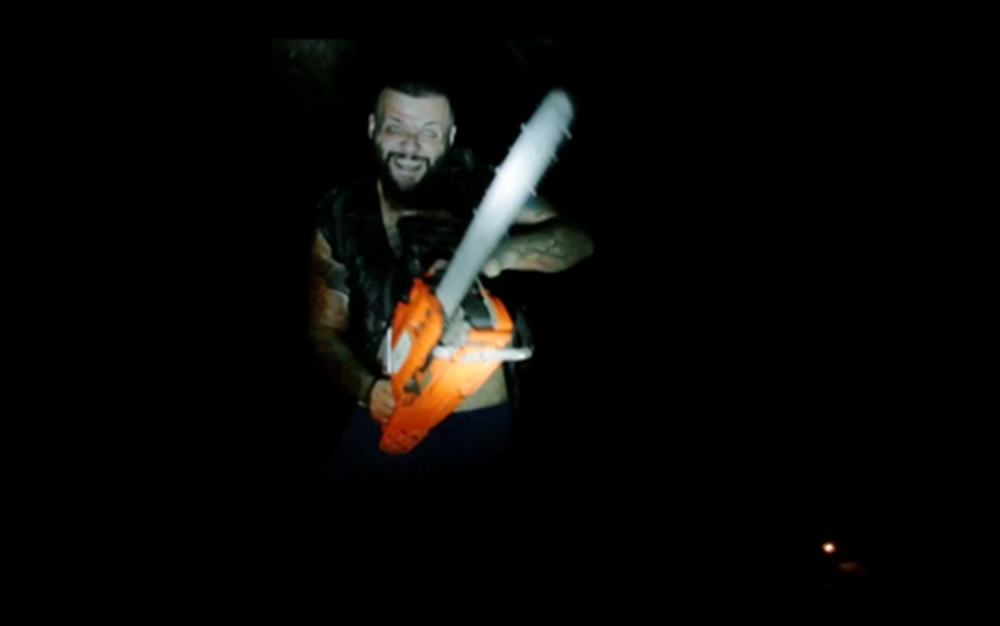
Have you ever played the game Condemned? Released to middling sales, a strong cult following, and eventually followed by an awful sequel, it followed a detective framed for a crime who falls into the underworld of a city, tracking down a serial killer while battling the insane and evil denizens of the streets with nothing but metal pipes and wooden two-by-fours. The game gained most of its following for its incredibly stressful, frightening atmosphere, where the first-person melee combat felt truly visceral and dangerous, enhanced by the fact that it only took a few hits to die; your character was vulnerable and outnumbered, facing relentless enemies hiding in the dark, all of them strong enough to pose a serious threat. The first time I played the game, I found it too stressful to make it past the first two chapters, and even now having completed the game I still go back to it for a reliably frightening and nerve-wracking experience. It’s one of the most effective horror games I’ve played, one that truly expresses helplessness and fear in a powerful way, using the interactivity of games to bring the player into the mindset of its character. I bring this up because Hotel Inferno is basically Condemned. Except it’s shit.
In Hotel Inferno, our hero (though it feels strange calling him that) is a professional killer on a job for a mysterious corporation. The entire movie is shot in first-person, and for like 10 minutes he has glasses on that the corporation gave him to record the murders, throwing a weird HUD on the screen that only makes it that much uglier. But then he gets rid of the glasses before the real action even starts, which speaks to the consistency of vision the film refuses to display. As he enters the titular hotel, he’s told about his new job, which is, conveniently, to kill the people in the next room with a ceremonial hammer and knife, and to remove their brains and rip out their guts. Not one to balk at such a request, our hero decides this is a-ok and pops next door real quick. During this opening, we also get to see real life crime scene photos pop up on the screen, under the justification that these are photos of our hero’s previous murders, and murders of the people next door (oh yeah, they’re professional killers also I guess). It’s shockingly distasteful and offensive, obviously. Oh, and this hitman has a girlfriend who he keeps calling. She sounds mean and disinterested in his existence, and in that way I found her the most relatable character in the whole film.
Next door, he finds his first victim sitting on the bed, back to him, wearing nice big headphones (I guess the game’s set to easy mode), so he slices her up, tearing open her head as more blood squirts out of her scalp than is in the entire human body (this is a common theme in the film; the fake blood budget for this film must’ve been astronomical). Having done this, he sees that she’s wearing the same recording glasses as he’s wearing, and this causes him to throw a deep-voiced hissy-fit, deciding that this is a line he won’t cross, that this is just too much for him. Now, I’ve never been a contract killer, but I can’t imagine the point where you reconsider your profession is when you’re wrist-deep in a person’s skull. I assume you finish the job and then ask for clarification if needed. But hey! What do I know. It’s just a horror movie, character consistency doesn’t matter, right?
His tantrum is interrupted by the second target, crouched in a bathtub filled with inhuman amounts of blood, muttering something about pain and suffering and how “she” feeds off pain, that doing this work will kill anyone foolish enough to engage in it. Eventually, after much dithering, our hero kills him too, and the all-powerful voice of his employer instructs him to finish the job, to do the ritual, or else “she” will be angry. This is the moment our hero decides he’s had quite enough, and he destroys the glasses he was wearing and attempts to flee, even after warnings that the entire hotel is filled with other operatives, ready to take him out at the slightest problem. Our hero does not seem concerned by this, for reasons I couldn’t divine from the aether of trash this movie resides in. The rest of the film is him running from those other employees, engaging them in gory fights and crushing a large number of skulls with anything and everything at hand. Eventually, instead of heavy-handed foreshadowing of a supernatural presence, we get heavy-handed reality of a supernatural presence, a poorly-designed monster-mask breathing CGI fire and smoke that is as jarring and unconvincing as every other CGI effect in the film (although I will give them credit, most of the blood and gore looked like decent and practical effects, which of course just increased the unreality of the CGI). You’re not gonna watch this, but spoiler alert anyways: he dies in the end.
Oh boy, where to start? There’s the relatively minor quibbles, certainly: the voice of our main character is very strangely placed in the mix, sounding like it’s coming from somewhere simultaneously inside and outside our point of view, an apathetic actor with a goofily serious voice reading lines from the spirit plane and beaming them directly into our consciousness. It’s odd, to say the least. Then there’s the terrible pacing, never given time to relax or breathe, to build suspense. You’ve got terrible shot compositing, a plot like swiss cheese, a chaotic and shrill sound mix, nonsensical music cues, and actors who sound as if they’re being forced at gunpoint to read the script. It’s not a good movie. But I want to circle around to my original point: why doCondemned and the Maniac remake (which I discussed in depth here) work, and why doesn’t Hotel Inferno?
The camera is a tool of perspective, and its role is to guide the audience towards the experience being put across. First person perspective uses the camera to show a specific subjectivity, and to cause the viewer to relate to and identify with the perspective being shown. In Condemned, the first person perspective is used to reduce the distance between the experiences of the character and the experiences of the player. It creates fear by instilling a sense of danger in the audience. Maniac, on the other hand, uses a first person perspective to challenge the audience by forcing them into the identity of the killer; it uses the camera to examine how we interact with artistic depictions of violence. Hotel Inferno is in first person because I assume someone thought it would be cool. Effective first person filmmaking — whether it be Maniac, Peeping Tom, the Friday the 13thmovies — has to be justified contextually, because it is not an intuitive or effective way to make a standard film. By not allowing change in perspective, it limits the ability of a film to create emotional and thematic interest. When it exists purposelessly, it’s sloppy, uninteresting, and stifling.
The story and themes of Hotel Inferno simply don’t call for the filmmaking techniques used, and as such they come across as gimmicky. It’s not necessarily a bad concept for a film—certainly, entertaining horror movies have been made with far worse conceits—but the execution doesn’t allow it to be visceral, tense, or exciting. It’s used without knowledge of what it is accomplishing; it’s ignorant filmmaking, and not in the way such a term might be used positively. The filmmakers clearly asked themselves if they could make a film this way, but never bothered with whether they should make a film this way. It’s form with no regard to content. It reflects in those god damn glasses that feature heavily in the first part of the film and immediately disappear without a thought as to their reason for existing. There is nothing about the film that requires those glasses, but the filmmakers thought they would be cool, so they’re in. But they’re not cool. They’re frustrating, annoying, and fruitless.
In many ways, that describes Hotel Inferno in a nutshell. It doesn’t comprehend the ways that horror films work, and it doesn’t have any interest in understanding the form and expression of the video games it’s so clearly indebted to. It’s not scary, it’s not funny, it’s not exciting, it’s not even satisfying from a gore perspective because it’s all shot so poorly and frantically. It’s not the worst film I’ve seen, mostly because it has the decency to be under an hour and twenty minutes, but it is one of the least interested in succeeding. It’s apathetic and mercenary. Looking for hidden gems, I try and search out horror films I’ve never heard of all the time; Hotel Inferno is the kind of movie that reminds me why others don’t.
–
Directed by Giulio De Santi; written by Giulio De Santi; starring Rayner Bourton, Jessica Carroll, and Michael Howe; 80 minutes.
Hotel Inferno is available:



 Derek
Derek
 Isabelle
Isabelle